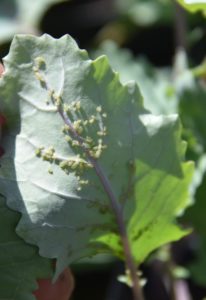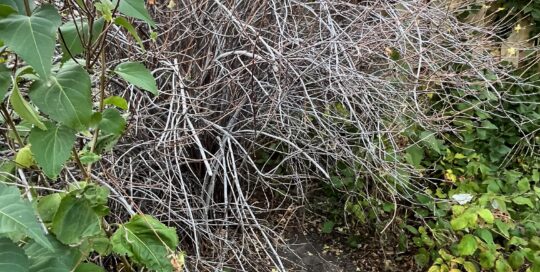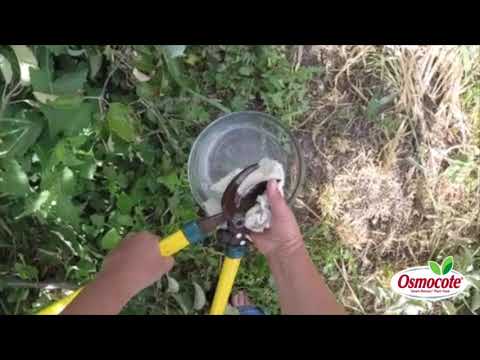Watch for pests on new transplants
Views: 1368

Even for those of us who start our own plants, it’s impossible to leave a greenhouse without bringing home something new. Unfortunately, sometimes pests catch a ride on the new transplants and come home with you. This is why it’s important to look closely at your new plants and know how to handle any unwanted insects. Here are a few of the most likely ones found on transplants.
Sap sucking aphid pests on new transplants
Aphids – These are undoubtedly the most common hitchhiker since they like so many different types of plants. They’re really not picky. And while most plants live with a certain level of aphid pressure, you really notice a difference when it comes to the young transplants. If you see aphids on your babies, take care of them immediately by gently rinsing off the leaves under warmish water rubbing off the aphids from the leaves and stems. You’ll probably have to do this a few times since it’s difficult to eliminate them all.
Flitting fungus gnats
Fungus gnats – While they’re more of a problem on houseplants that stay indoors for long periods of time (or forever), once and a while, there is fungus gnat larvae in the soil of your new plants. They don’t suck the life out of the plants on the stems or leaves, but at high enough numbers, they affect the roots of the plants.
Fungus gnats are tiny, only 1/8 inch long, so it’s tough to see them unless they’re flying around in fairly high population numbers. If this is the case, one of the easiest ways to clean them up is to place yellow (not the blue ones) sticky traps around your plants. Either set small squares right on top of the soil (if you bought more mature plants) or prop them up nearby. You can even use flypaper if you’re in a pinch.
The other option is to create a simple apple cider vinegar trap. In a deep lid or a tuna can, mix equal parts of apple cider vinegar and water together giving you at least a 1/4 inch depth of liquid. Add a couple of drops of dishwashing liquid and set it next to your pots. The gnats are attracted to the vinegar, but will drown.
Be wary of whiteflies on new transplants
Whiteflies – If you have whiteflies, you need to take care of them immediately because they can kill tomatoes, and many other, plants. These are another one that are tough to see unless you look closely, or unless there is a major infestation.
Females lay 200-400 eggs in a cycle so numbers can grow out of hand fairly quickly. Check the undersides of your new plants for the whiteflies themselves, or the little nymphs that look like fuzzy white pods stuck to the leaf bottoms. If you see the nymphs, try washing them off in the sink first. As with the aphids, you’ll want to do this several times. But if that doesn’t work completely, consider using insecticidal soap for a better kill rate. To knock down the adult population, use the yellow sticky traps if you still have your plants in the greenhouse or indoors.
It’s no fun to bring home unwanted insects to start the gardening season, which is why it’s important to look for pests on new transplants. Thankfully, if you catch them early, you can eliminate them before even planting them in the ground.
Meet Amy Grisak
Amy is a freelance author and photographer in Great Falls, MT who specializes in gardening, foods, and sustainable agriculture. She provides information on every kind…
Amy's Recent Posts

It’s Time for Garden Cleanup!








